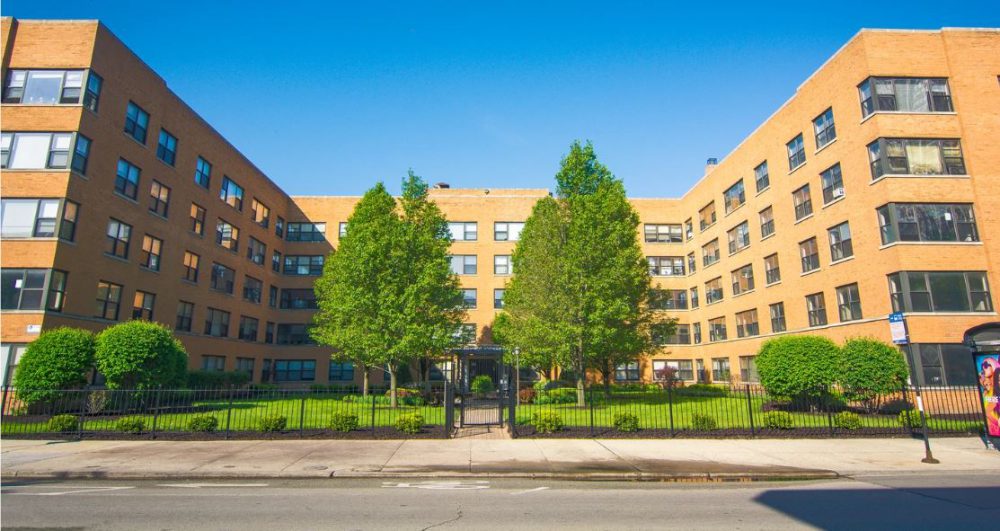06.03.19
RE Journals: The experts speak, digging into the details on condo deconversions

By Matt Baker, RE Journals
Every year since the end of the recession, the condo deconversion movement has gained steam. This late in the cycle, however, many are beginning to question whether this engine will start to seize up. Over a dozen experts all agreed that the trend is still humming along.
That’s the message that more than 100 industry professionals received yesterday at REjournals’ second annual Deconstructing Deconversion Summit. The main takeaway was that as brokers, attorneys, title specialists and other real estate professionals become more efficient at conducting a condo deconversion (even if the same does not hold true for the resident owners), the trend is continuing this year just as intensely as in years past.
State of the market
The first panel looked at the current state of the deconversion market, from which neighborhoods are in demand to the types of buildings that are most suitable for a deconversion. Kathryn Kovitz Arnold, practice group chair and partner at Taft Stettinius & Hollister LLP, moderated the discussion.
The panel agreed that for the Chicago market, high density, North Side neighborhoods like the Gold Coast and Streeterville, as well as some suburbs like Oak Park, are most witnessing the most activity. But the trend is strong enough that the economics of the deal can work anywhere that tenants are eager to live.
“We’re seeing deconversions in any submarkets with strong rental demand,” said Meghan Czechowski, MAI, managing director, Cushman & Wakefield. “And right now, almost all markets have strong rental demand.”
As far as the types of properties that buyers are targeting, there are a few characteristics and fundamentals to watch out for. One is the history of the building itself.
“We had condo conversion from 2002 until the crash in 2008/2009,” said Mike Zucker, principal, Peak Properties. “Every property that probably should not have been converted—those with a lot of studios and one-bedrooms, for example—are the buildings that we’re seeing deconverted.”
Andy Friedman, condo deconversion broker at Kiser Group, also sees the trend of deconversions as simply unspooling the glut of condominiums added to the supply in the run-up to the housing crisis. Once that bubble burst, the market could not sustain the oversupply of condos.
“I find deconversions to be more common where a property converted in the mid-2000s,” Friedman said. “When ‘08 happened, you ended up with buildings filled with landlords by accident. Deconversion is their way out.”
One of the most appealing traits, sometimes more than even location, is whether or not the property is facing deferred maintenance. If a building has a leaky roof, crumbling façade, aging HVAC system or any of a number of other extremely expensive upgrades to complete, the owners will be highly motivated to sell and offload those problems onto someone else.
Howard Dakoff, partner at Levenfeld Pearlstein, LLC, brought up a trend in the deconversion market that he has only witnessed in the last few months, wherein large, corporate prospectors are scooping up several owner units in a single property to better sway the vote should the building face a potential sale.
“Until just a few months ago this was just an opportunistic play,” Dakoff said. “But what I’ve noticed of late is more corporate raids, buying chunks of units, sometimes not quietly. Once you have an entity that owns a chunk of a building, it creates chaos.”
Friedman affirmed that he has noticed this trend as well. Often these buyers will disguise their acquisitions, completing the transactions nearly simultaneously so that the property’s association doesn’t notice the takeover until it’s too late.
“I’ve seen 20 closings in three days,” Friedman said. “That was intentional.”
Collin McKenna, vice president of acquisitions at Golub & Co., has also seen this trend, but he’s not as concerned that these corporate raids will sow enough anarchy to destabilize the deconversion movement. In fact, some condo associations have added protections against this very thing.
“We’ve seen groups come in and attempt to buy up a building. By the time they did, the association got wise and changed the rules,” McKenna said. “It’s much easier to do on smaller buildings but trying to do it in a 200- or 300-unit building can be risky.”
The one thing that all panelists agreed on was that communication and transparency are crucial to successfully closing a condo building sale. That means guiding the owners—who are nearly universally inexperienced in real estate—through every step of the process.
It also means disclosing all known issues to a prospective buyer. If and when they discover, for example, expensive and necessary maintenance that must be completed before marketing to renters, that may put the deal in jeopardy. The buyer may come back with a new price, which could necessitate a new vote, or simply pull out altogether.
Closing the deal
A second panel, moderated by Jim Hanson, principal at Avison Young, dug deeper into the fine details of condo deconversions. Joining him were Mojca Anaya, Illinois state escrow lead, First American Title; David Bloomberg, partner, Chuhak & Tecson, PC; Kelly Elmore, principal at Kovitz Shifrin Nesbit; Benjamin L. Kadish, president, Maverick Commercial Mortgage, Inc. and Aaron Zeitner, commercial broker and condo deconversion specialist at Keller Williams Commercial.
They discussed offering incentives to induce more “yes” votes, the methods of purchase price allocation, dealing with antagonistic owners and much more. That latter point drove much of the discussion. As Illinois law requires 75 percent approval from owners before a condo building can be sold, how much impact can those staunchly against a sale have on the transaction?
“The naysayers are the vocal audience,” said Zeitner. “I will typically take pressure off the board by letting the audience know that this was not easy decision for the board to make. I also let people know it’s still being evaluated, it requires a supermajority vote and 75 percent is not an easy number to get to.”
Elmore agreed and said that she advises associations that bringing a prospective deconversion sale before the owners can lead to hostile meetings on par with discussions of special assessments.
“The common denominator in successful deals is a strong board,” said Elmore. “That doesn’t necessarily mean that they are all in favor of a sale, but they have to be united in the process itself.”
As far as incentives, many buyers offer leasing credits as they want to take over the property with as many renters already in place as possible. This also reduces the potential pool of those opposed to a sale.
One of the biggest determinants of an equitable outcome is how the final price is allocated out. There are almost always special circumstance units—those with features that other units don’t have such as a balcony or better views—that will command a higher share of the final sale. While the various owners may quibble over these details, there are larger concerns for the buyer.
“The total project cost includes so much more than price allocations on units,” said Kadish. “If someone is going to do gut rehab, the cost could be 30 percent of project cost.”
In December 2018, a joint venture among The Wolcott Group, Marc Realty, Ruttenberg Gordon Investments and funds managed by Elliott Management Corporation purchased the 449-unit, Bertrand Goldberg-designed River City in the South Loop. To date, it is the largest condo deconversion in Chicago history.
Luxury Living Chicago Realty has been tapped to market and lease the property. Aaron Galvin, the firm’s CEO and founder, gave a presentation on the keys to success in leasing a condo deconversion. According to Galvin, this starts with respectfully rebranding. His team heard from plenty of residents at River City that, had the building rebranded, they would have been disappointed and possibly moved out, cutting into the property’s rental base right from the outset.
He also discussed building excitement through internal marketing, social media and media outreach. Messaging matters, and this includes scrubbing a property’s digital footprint to control the branding when a potential renter searches the building on the internet. It is also imperative that the leasing team, lawyers, ownership and all other stakeholders are committed to the same language.
“It’s important that the messaging is the same, and this includes changing the talk from deconversion to rental,” Galvin said. “New renters don’t care that it was a deconversion.”
If you are a condo owner, learn more about the condo deconversion process at https://www.kisergroup.com/project/condo-deconversion/.
